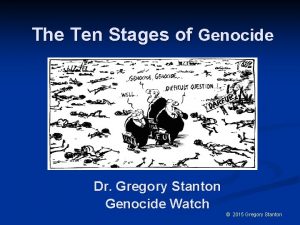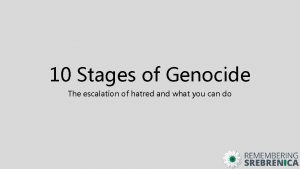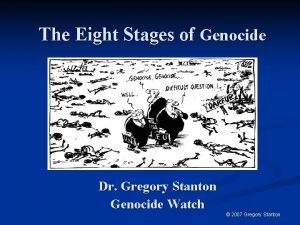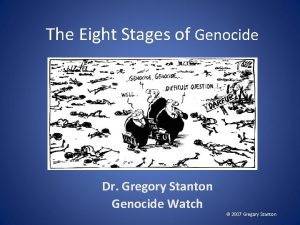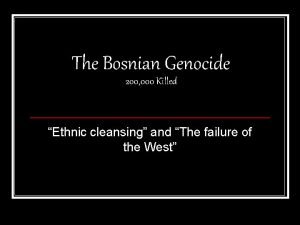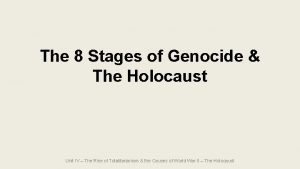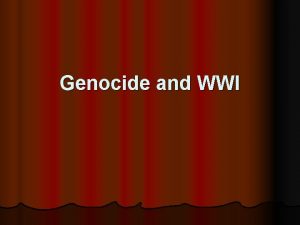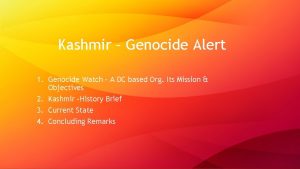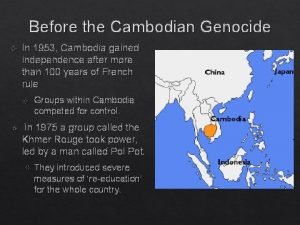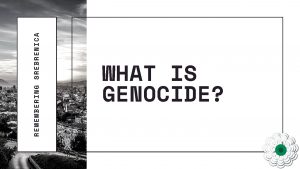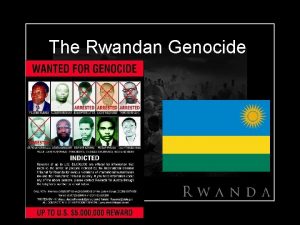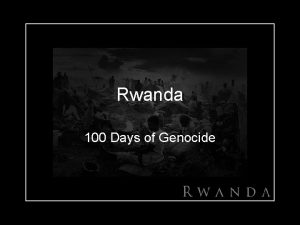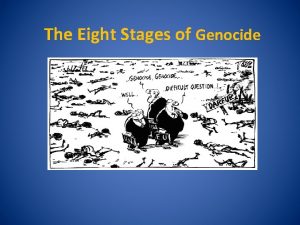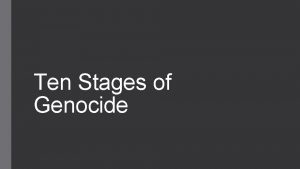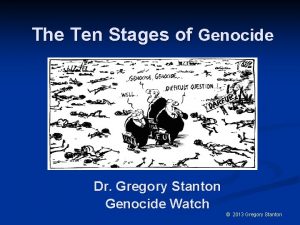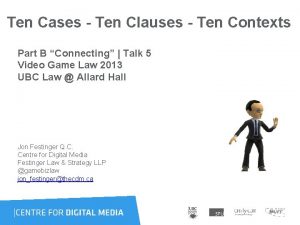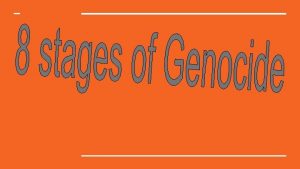The Ten Stages of Genocide What is Genocide

















- Slides: 17

The Ten Stages of Genocide

What is Genocide? In your groups, agree on a definition of genocide.

What is genocide? Genocide – defined in international law as an act ‘committed with intent to destroy, in whole or in part, a national, ethnic, racial or religious group. Genocide is generally carried out through the attempted killing of all members of a group, but can also be classified as deliberately ‘placing a group in conditions calculated to prevent their survival’.

Bosnia-Herzegovina

Ethnic groups in Bosnia - Herzegovina • Bosniaks - Muslim • Bosnian Croats Catholic • Bosnian Serbs Orthodox

Ethnic groups in Bosnia - Herzegovina • Bosniaks - Muslim • Bosnian Croats Catholic • Bosnian Serbs Orthodox

Outbreak of war

Ethnic Cleansing


10 stages of genocide The Ten Stages of Genocide explore a possible timeline of genocide. Prejudice, discrimination, exclusion and intolerance do not inevitably lead to genocide nor is it likely that this will occur; however these behaviours diminish and degrade members of our community and may prevent them from taking and enjoying a full role in society. It is also sobering to reflect that every systematic genocide has been built on a failure to challenge these behaviours; failures which can become problematic in specific social conditions.

10 stages of genocide In groups, order the 10 stages of genocide.

10 Stages of Genocide Classification 2. Symbolisation 3. Discrimination 4. Dehumanisation 5. Organisation 6. Polarisation 7. Preparation 8. Persecution 9. Extermination 10. Denial 1.

Living the Lessons The most important thing to remember from Srebrenica is that it could have been prevented. By applying the 10 stages of genocide model to the Bosnian war, we can see that key indicators (Concentration camps, torture and mass killings) happened as early as 1992. What could be done at each stage to prevent the situation from escalating?

Living the Lessons It is imperative that we try to find the places in which both individuals and the international community could have made different choices. These lessons are a starting point in thinking about what lessons we can learn from Srebrenica.


Make a pledge In groups Discuss what you can do to create a more united community Educate Remember Act

Thank you for participating
 Ten stage of genocide
Ten stage of genocide Thế nào là giọng cùng tên
Thế nào là giọng cùng tên Môn thể thao bắt đầu bằng chữ đua
Môn thể thao bắt đầu bằng chữ đua Eight stages of genocide
Eight stages of genocide 10 stages of genocide
10 stages of genocide The eight stages of genocide
The eight stages of genocide Dr gregory stanton
Dr gregory stanton Fifty past nine
Fifty past nine Ten ten siempre fuerzas y esperanza
Ten ten siempre fuerzas y esperanza Ten ten program
Ten ten program Bosnian genocide death toll
Bosnian genocide death toll Genocide
Genocide H1abc
H1abc Cambodia killing fields
Cambodia killing fields Define genocide
Define genocide Cultural genocide china
Cultural genocide china Genocide watch kashmir
Genocide watch kashmir Cambodian genocide blue scarf
Cambodian genocide blue scarf
